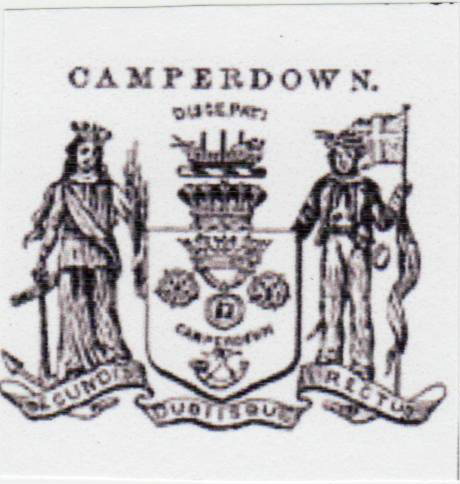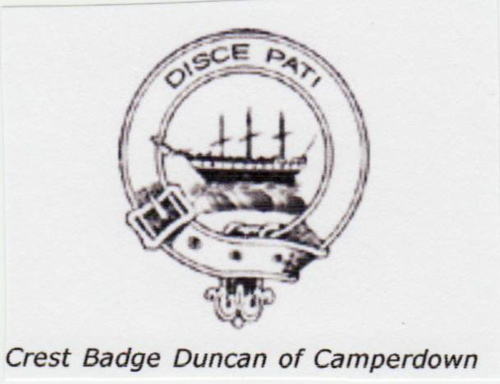Am hoping someone may be able to provide some information regarding a five-piece Georgian-era tea service, purchased in England about 80 to 90 years ago, that we recently inherited. Have done a bit of research on what the hallmarks mean but some things remain a mystery. The hallmarks include a lion passant guardant, a crowned leopard’s head, a George III duty mark, and a date stamp (K) indicating it was made in 1805-6. However, we are totally in the dark regarding the maker’s mark and the crests that appear on either side of each piece.
The maker’s mark appears to be J.E (the E looks like a reversed numeral 3, with the full stop centred between the letters) inside a squarish-shaped depression with ballooned corners.
The larger crest consists of a crowned shield with a St Andrews-style cross on one half (can’t quite make out what is on the left half) supported by a crowned woman holding an anchor on the left, and a hatted male figure holding a flag on the right. The motto beneath is “Secundis Dubiisque Rectus”. The smaller crest consists of a large crown over a sailing ship with a broken mast, and the motto “Disce Pati”.
Any clues about the maker, or the identity of the person/family for whom it was made, would be much appreciated. Also, as we might need to now get some extra insurance cover, any ideas of its approximate value?
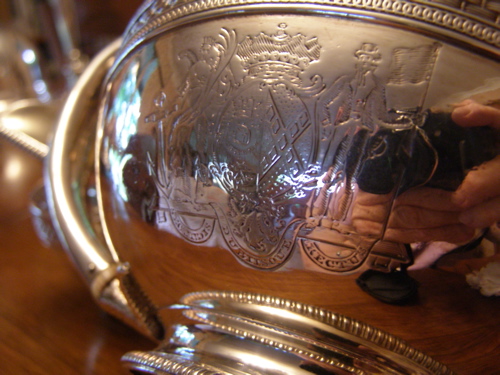
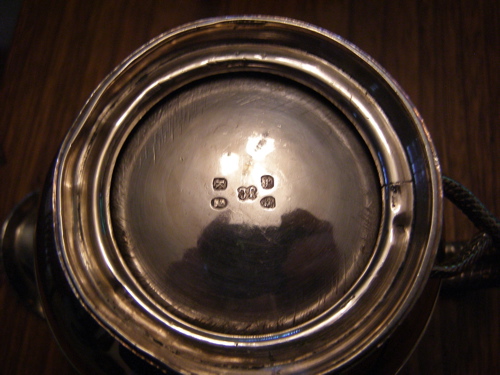
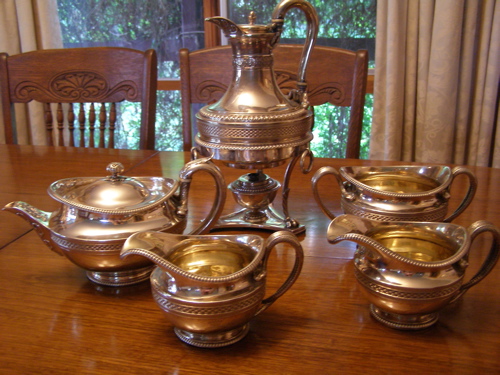
Hi carolt07
It is very possible that the maker mark is for John Emes. He was registered in 1798 and has two marks, JE with the E as a reverse 3.
If you could get a close up of the mark then we could confirm it.
I’m afraid I cannot help with the crest
Hope this helps.
Many thanks for your reply. After searching for “John Emes silversmith” on the net I found a site that reproduced his mark in close-up, and was delighted to find that it is identical to the one on the service. So am now virtually certain that he was the maker.
Have also spent a bit of time trawling though the internet using the phrase “Disce Pati”, and am now reasonably sure that the crests can also be identified. Discovered that “Disce pati” (or “Learn to suffer”) is the motto of the clan Duncan, and various branches of the family use it above different forms of a sailing ship (e.g. with full sails, no sails or dismasted) as their crest.
A few more hits on the net then led me to Viscount Adam Duncan, 1st Earl of Camperdown & Baron of Lundie, who was the Admiral commanding the victorious British fleet at the Battle of Camperdown in 1797. This was a very important victory and he was subsequently given his titles and a yearly payment of 3000 pounds in gratitude. In his day he was almost as famous as the younger Lord Nelson became a decade or so later. One of the sites I then visited showed a representation of his crest, which appears to be a fairly close amalgamation of the two separate crests that are engraved onto the tea service. However, since Adam Duncan died in 1804 and his title passed to his son, it seems more likely that the service (dated 1805) may actually have been made for the 2nd Viscount Camperdown. The last member of the family died in the 1930s, so the service was probably acquired when Camperdown House and its contents were subsequently sold off.
